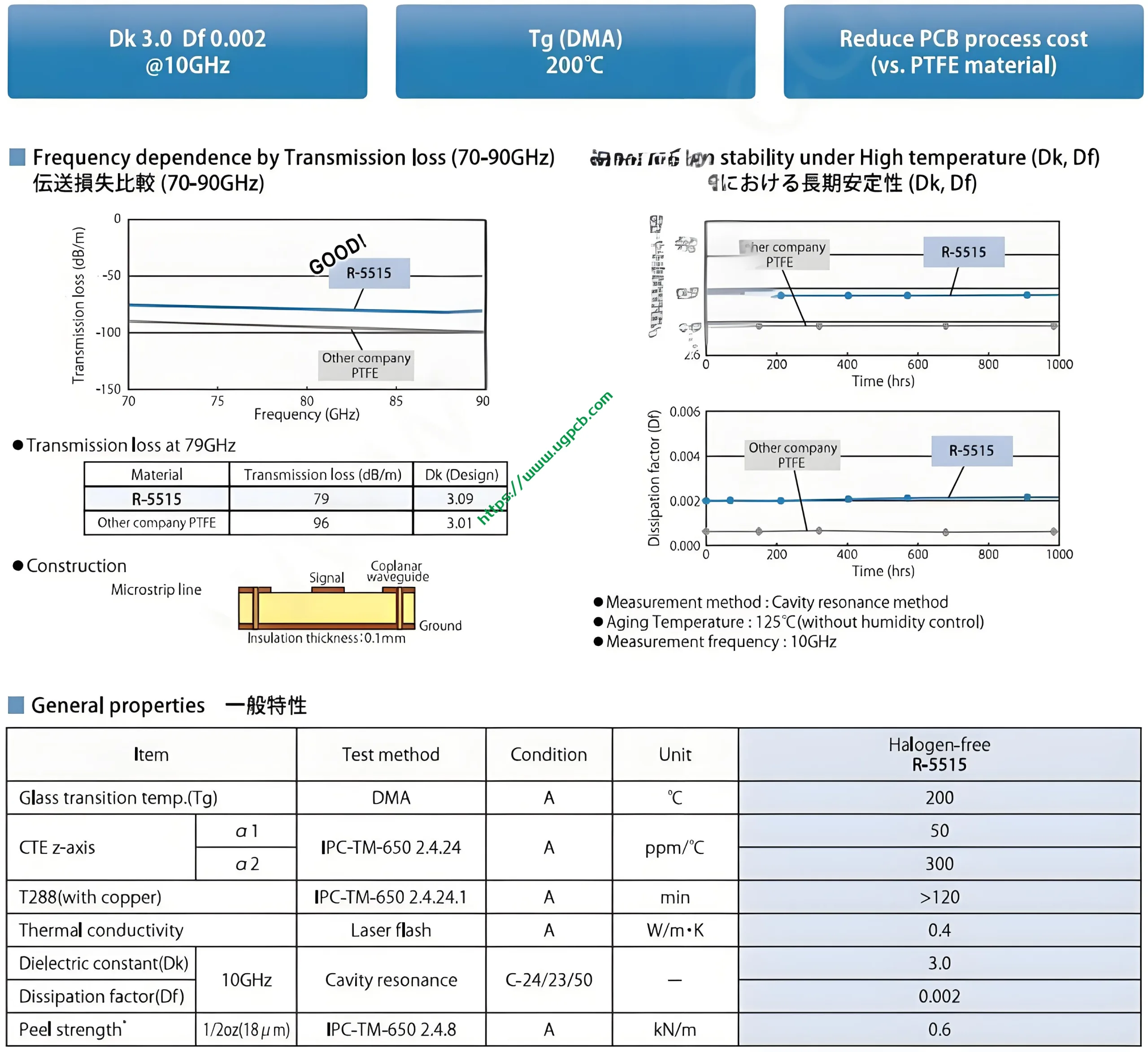Panasonic R-5515: A Breakthrough in PCB Substrates for Millimeter Wave Antenna Applications
Development Overview
Panasonic has pioneered a halogen-free ultra-low transmission loss PCB substrate, model R-5515, tailored specifically for millimeter wave antenna substrates. Leveraging thermosetting resin technology, this innovation sets a new industry benchmark with its unparalleled low transmission loss performance.
Industry Context and Need
As Advanced Driver Assistance Systems (ADAS) and autonomous driving technologies advance, millimeter wave radar has become pivotal for sensing applications. These systems necessitate antenna substrates with minimal transmission loss to ensure optimal functionality. Traditionally, fluorocarbon substrates have dominated this market due to their favorable properties, albeit at the cost of higher manufacturing complexity and expense. Panasonic addresses these challenges through advanced resin design and copper foil bonding technologies, introducing a versatile alternative that combines low transmission loss with improved processability.
Key Features of Panasonic R-5515
Unmatched Transmission Loss Performance
- Transmission Loss: Merely 0.079dB/mm @79GHz, establishing it as the industry’s premier low-loss solution for millimeter wave antennas, thereby facilitating high-efficiency, low-loss operations crucial for advanced automotive radar systems.
Processability and Cost Efficiency
- Enhanced PCB Manufacturability: Unlike PTFE-based materials that pose drilling and copper plating challenges, R-5515’s thermosetting nature enables seamless integration into standard PCB fabrication processes, significantly reducing production costs associated with specialized equipment typically required for fluorocarbon substrates.
Versatility in Multilayer Integration
- Mixed-Material Compatibility: R-5515’s compatibility with general FR4 materials streamlines the fabrication of multilayer PCBs, addressing the growing demand for compact, cost-effective millimeter wave modules. This adaptability overcomes the limitations faced when combining thermoplastic fluorocarbons with thermosetting glass epoxy substrates.
การใช้งาน & Impact
The Panasonic R-5515 is poised to revolutionize millimeter wave antenna PCBs, serving as the foundation for vehicle radar systems and wireless communication base stations while enabling high-speed PCB transmission. Its introduction marks a significant leap forward in enhancing system efficiency, reducing costs, and broadening design possibilities within the realm of high-frequency communication technologies.
 โลโก้ UGPCB
โลโก้ UGPCB



